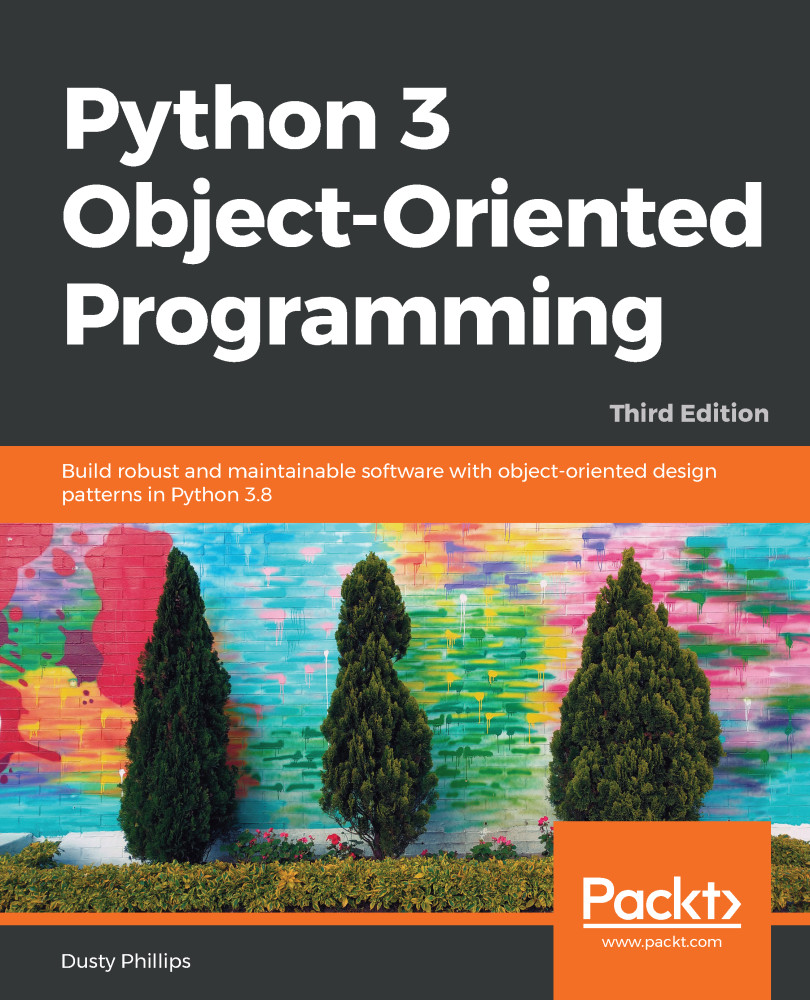We've discussed how many of Python's built-ins and idioms seem, at first blush, to fly in the face of object-oriented principles, but are actually providing access to real objects under the hood. In this chapter, we'll discuss how the for loop, which seems so structured, is actually a lightweight wrapper around a set of object-oriented principles. We'll also see a variety of extensions to this syntax that automatically create even more types of object. We will cover the following topics:
- What design patterns are
- The iterator protocol—one of the most powerful design patterns
- List, set, and dictionary comprehensions
- Generators and coroutines


